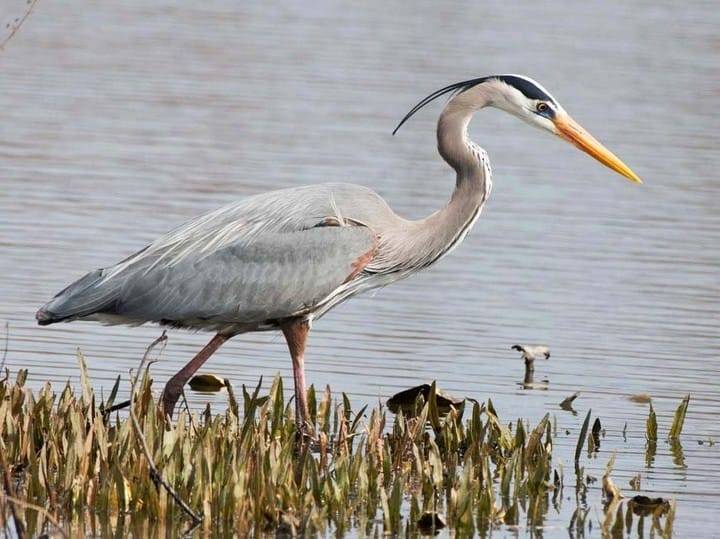If you are a walker, biker, golfer or runner you are usually within view of one of the many ponds and pools which seem to be everywhere in Celebration. The ponds host many types of birds during the winter months including Snowy and Great Egrets, Little Blue and Tricolored Herons, Wood Storks and both White and Glossy Ibis.
Dominating the scene is the Great Blue Heron, the largest of the wading birds. Almost four feet tall, it stands out when in the company of the other pond waders.
A solitary hunter of small fish, it generally chooses a favorite hunting spot, returning to it each day. Usually standing a few inches deep within the pond, it quietly and patiently awaits small fish to approach it. Sometimes it will awkwardly pursue prey once sighted.
With a quick stabbing action into the water, it will capture a fish and then skillfully reposition it within its long beak. The fish is then swallowed completely, head first!
While allowing a somewhat close approach by the casual walker, it will raise itself in a graceful flight to the other side of the pond if its “personal space” is invaded.
It will usually issue its loud signature call when taking to the air. “Kraannk, kraannk!”
When flying, its deliberate low flight seems to be in slow motion.
The Great Blue Herons leave our ponds for a few months each spring. They congregate in nearby breeding colonies…appropriately called heronries. These are located throughout Florida in undeveloped swampy areas.
After breeding, our local birds are sure to return to their favorite fishing pond to “winter” in Celebration once again.
By Chet Blazak
This article appears in the February 2020 edition of the Celebration News

